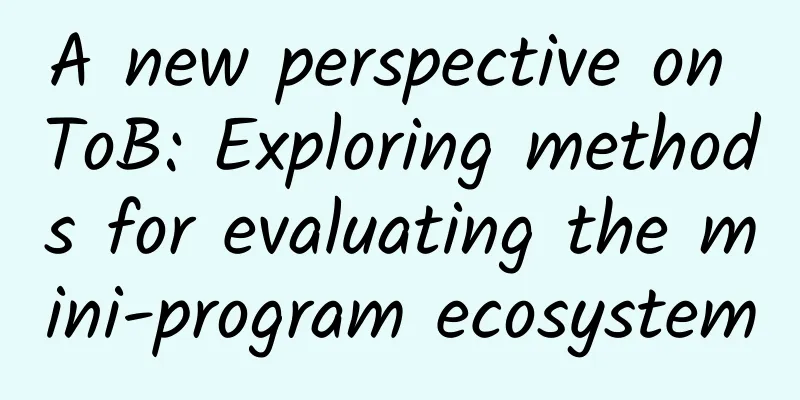Astronomy, the science closest to us and yet farthest away, what is its use?

|
Produced by: Science Popularization China Author: Zhang Shuangnan (Institute of High Energy Physics, Chinese Academy of Sciences) China Science Expo Producer: China Science Expo Did you know that almost all of our knowledge of the world and the technology we use today originate from astronomy? This may surprise you, but it is true. It is also because of this that astronomy, which is considered to be the farthest from us, is actually the closest to our lives. Why is astronomy the science closest to us? The sun we see during the day and the starry sky we see at night are all objects of astronomy. Although the objects of astronomy are very far away from us, they are actually the closest to us because we can see them every day, although we may not be able to touch them. Image source: veer In addition, the physical laws used in our science, such as the most important Newtonian mechanics - the law of universal gravitation, and quantum mechanics, all come from the study of astronomy. In the early days, astronomers observed spectral lines that were observed in the spectrum of the sun and other celestial bodies. It was to understand these phenomena observed in astronomy that we established our physical theories. And scientists also realized that these theories apply not only to the sky, but also to the earth. Image source: veer From this perspective, things in the sky and on earth are actually the same thing, and they are all guided by the same astronomical laws. Because of the various laws discovered, today's various technologies have been developed. So there is a joke that goes, why are animals and humans so different? Because animals don’t have astronomers. How does astronomy go from laws to applications? The technology we need is often one or two generations higher than the industrial technology level at the time. However, the process of turning an abstract law into a real technology is full of uncertainty. Usually, researchers develop technologies in the laboratory and hand them over to the business community, who then make various instruments and put them on satellites. In this process, some technologies can be applied, some cannot, and some may even serve future scientific projects. Insight-HXMT satellite measures the strongest magnetic field in the universe Image source: Insight-HxMT However, perhaps these technologies that are only used for scientific projects today will really enter our daily lives many years later. However, it should be noted that the original intention of researchers to develop a technology is actually very simple, which is to realize forward-looking scientific ideas, but in the end it may extend to various impacts on technology. For example, WiFi technology was developed by astronomers for radio telescopes; web technology was developed by particle physicists for the convenience of communication. Back to the field of satellites, which is closely related to astronomy, we have not developed any revolutionary technology during the research and development process. However, there is no need to be discouraged, as some of our technologies are sufficient to achieve an almost monopolistic position in the international market. Achievements of Astronomical Satellites - Insights As early as the 1990s, Academician Li Tibei proposed this project, but at that time, due to insufficient economic and technical capabilities, our country did not have the ability to build astronomical satellites. So it was not until recent years that researchers developed the "Hui Yan". my country successfully launched its first X-ray space astronomy satellite "Insight" at the Jiuquan Satellite Launch Center Image source: China Aerospace Science and Technology Corporation This project was launched in 2017 and has achieved fruitful results, including observations of black holes. For example, it discovered a relativistic jet moving at almost the speed of light very close to the black hole, but it is not clear how it was produced. The Insight-HXMT satellite discovered the relativistic jet closest to a black hole Image source: Insight-HxMT Insight also discovered some strange behaviors of neutron stars, such as some fast radio bursts that are related to certain activities of neutron stars. Insight-HXMT satellite observes magnetar bursts and solves mystery of origin of fast radio bursts Image source: Insight-HxMT The Insight-HXMT satellite can not only observe black holes and neutron stars, it also observes solar bursts, gamma-ray bursts from the Earth, gamma-ray bursts produced by gravitational wave bursts, and gamma-ray bursts from very distant universes. The Insight-HXMT satellite has measured the strongest magnetic field in the universe Image source: Insight-HxMT The launch of the Insight-HXMT satellite has given our country a place in this field, and we have capabilities that other countries' satellites do not have. Of course, researchers have not become arrogant because of this, but instead hope to do better. Therefore, there are more and more follow-ups in our related fields. For example, the Enhanced X-ray Timing and Polarimetry (eXTP) was proposed as early as 2007, and about ten years later, the United States proposed a similar project. eXTP schematic Image source: Insight-HxMT In fact, scientific ideas are forward-looking, which means that there was no ready-made technology to support them at the time. If the technology was already available at the time, it would mean that your idea would not be so forward-looking. Therefore, in order to realize this very forward-looking scientific idea, researchers need a long time to develop new technology. Image source: veer So why do we need to develop forward-looking science and technology? Is it okay not to develop it? The answer is no. We must develop forward-looking science and technology because we need to establish scientific confidence, and the only way to establish scientific confidence is to do science ourselves. But the reality is that we lack scientific confidence because almost all the scientific knowledge we currently use was developed by foreigners. If you want others to respect you enough, there is a prerequisite that we must have enough scientific achievements, especially major scientific achievements and fundamental scientific achievements, and it would be best if even the research directions and scientific problems are proposed by us. But now most of us are "doing homework", we solve problems raised by others, just like others are teachers and we are students. No matter how well we learn, we are still students. We look forward to the day when we become teachers or stand side by side with "teachers", then we will have enough scientific confidence. Note: The content of this article was compiled by the editor based on an interview with Teacher Zhang Shuangnan Editor: Wang Tingting |
<<: "AI football player" is born, capable of dribbling, stealing, passing and shooting
>>: If the oil pan catches fire, would you choose to pour water, flour, or oil?
Recommend
Practical case analysis: How to deeply understand user growth
The concept of User Growth (UG) originated from t...
As an operations manager, what is your daily job?
Different products, different product stages, dif...
Google merges Android Pay and Google Wallet into new "Google Pay" brand
[[216522]] Tencent Technology News: In the mobile...
Jack Ma: Poverty alleviation is about giving people hope, not just giving them money
On May 27, at the 2018 China International Big Da...
6 practical cases of marketing and promotion of Bilibili!
Today, the fragmented society has led to a sharp ...
Latest discovery: Venus is still "alive", what does this mean?
On March 15, the journal Science published a disc...
More than a decade later, we finally see the giant red development board that was the original iPhone prototype
In October 2017, Apple released the iPhone X, a t...
Latest analysis: It is confirmed that it will directly affect Guangdong and Hainan! Typhoon "Makar" is approaching, what should we pay attention to?
Typhoon Makar was formed in the northwest Pacific...
App operation and promotion plan
You need a plan for everything you do. Picking up...
Ten years later, China's mobile phone bull market is on the rise
When " Jack Ma " stands at the crossroa...
Zhai Shanying's "Financial Class CEO Class" 43 episodes video
Zhai Shanying's "Financial Class for CEO...
He turned a Ferrari into an electric car
Standing next to a Ferrari, you can hear the deaf...
Dentsu Digital team was dismissed: employees collectively reported CEO Zhang Zhexiang for bribing GAC executives
On January 8, it was reported that the Guangzhou ...
The most famous child psychology experiment in history: The overlooked side of "delayed gratification"
© Rochester Review/University of Rochester Leviat...
How to run a perfect event?
Just recently, the finals of the official King of...









